This post may contain affiliate links. Please read our disclosure policy.
If you love ramen soup, this recipe for gluten free ramen instant noodle cups will give you back this quick, easy and delicious dinner!
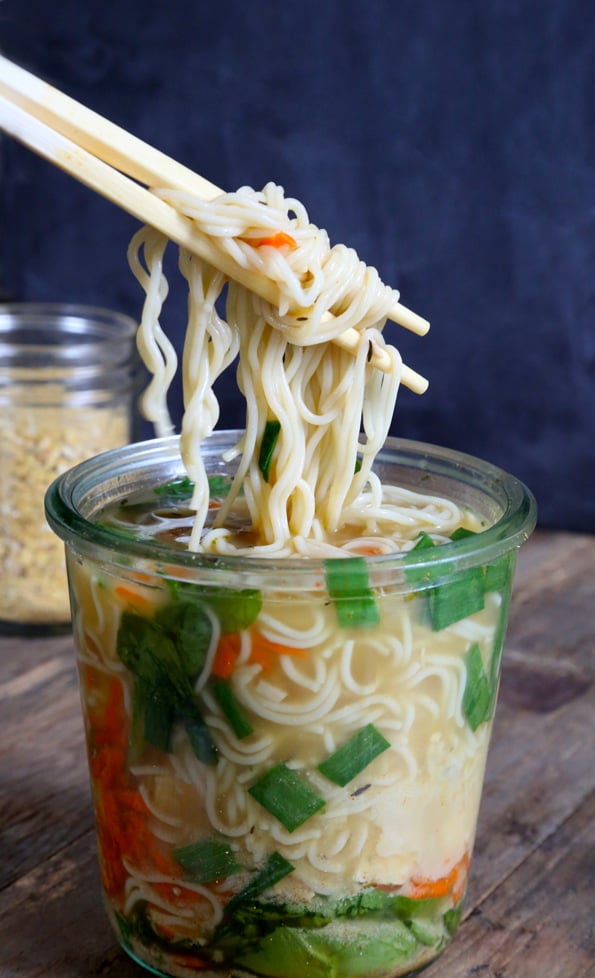
Table of Contents
- Instant noodle cups make the perfect lunch or quick dinner
- Why you’ll love this gluten free ramen recipe
- Ingredients for ramen noodle soup
- How to roast tofu
- Gluten free ramen ingredients and substitution suggestions
- How To Store and Serve Gluten Free Ramen
- Top tips for making perfect ramen
- FAQs
- Gluten Free Ramen Noodles Recipe
Instant noodle cups make the perfect lunch or quick dinner
These D.I.Y. gluten free instant noodle cups have been responsible for classing up my husband's work lunches. His regular office lunch is planned leftovers from the previous night's dinner.
And he never complains because he is kind, smart, and hungry. But when I have the ingredients on hand, it's so easy to make him a gluten free ramen noodles cup.
Once you layer in the easy-to-prepare fresh ingredients in these noodle cups, just store them in the refrigerator until you're ready to serve. They're perfect for at home or at the office.
At lunchtime, let the cup come to room temperature if you've stored it in the refrigerator. Otherwise, the cold ingredients will cool off the hot water too quickly. Fill the cup with hot water, cover and let steep for 2 minutes. Then serve hot. ♨️
Why you’ll love this gluten free ramen recipe
This gluten-free ramen recipe is perfect for those who love the flavors of traditional ramen but cannot tolerate gluten. It's easy to make and uses simple ingredients that you can find in your local grocery store. The broth is flavorful and comforting, while the vegetables add color and nutrition to the dish.
Plus, you can make these ahead and store them in the fridge until you're ready for them, which is why they're so awesome for work lunches. Everything in these ramen noodles will keep for up to 3 days in the fridge, so you can knock out a few days of lunches with just a few minutes of prep.

Ingredients for ramen noodle soup
These gluten free ramen noodles are incredibly versatile, so you can play around with things like your choice of veggies or the seasoning in your bouillon.
The vegetables
These noodle cups have the perfect balance of robust flavors. They're endlessly customizable, since you can use a variety of raw vegetables, like baby spinach and shredded carrots, and crisp-tender vegetables.
Steeping the vegetables in boiling water in the cups will soften everything a bit. But it's easy to blanch any vegetables that you'd rather not eat raw.
Simply bring a few quarts of water to a boil. Place the vegetables one at a time in the boiling water for about 30 seconds before draining them and setting them aside.
Green vegetables like sugar snap peas are properly blanched when they're bright green. Mushrooms should be blanched just until they soften. Each should take about 30 seconds.
The noodles
You can use the same boiling water that you used to soften the nests of gluten free ramen noodles. If you're preparing the noodles more than a few minutes before you plan to assemble the cups, toss the softened noodles in a tiny bit of olive oil, so they don't stick to one another too much.
Homemade vegetable bouillon
The gluten free ramen noodles may look like the star of the noodle cup show, and of course they're important. But the real innovation of this recipe for gluten free ramen noodles soup is the homemade gluten free vegetable bouillon powder. It turns plain hot water into a satisfying meal.
A blend of soup-friendly spices in just the right balance turns plain hot water into a satisfying meal, cheaply. The base of the bouillon powder, though, is nutritional yeast flakes.
Nutritional yeast is made up of inactive yeast flakes, and it's something I used to think of as for hard-core vegans alone. But now it's everywhere, and it's become an essential part of many savory dinner recipes—like homemade gluten free rice a roni.
Store the vegetable bouillon in a glass container with a tight-fitting lid, and use it to make hot water into vegetable stock when you want a warm cup of something. Add the dry mixture to any savory chicken dish and amp up the flavor in an instant.
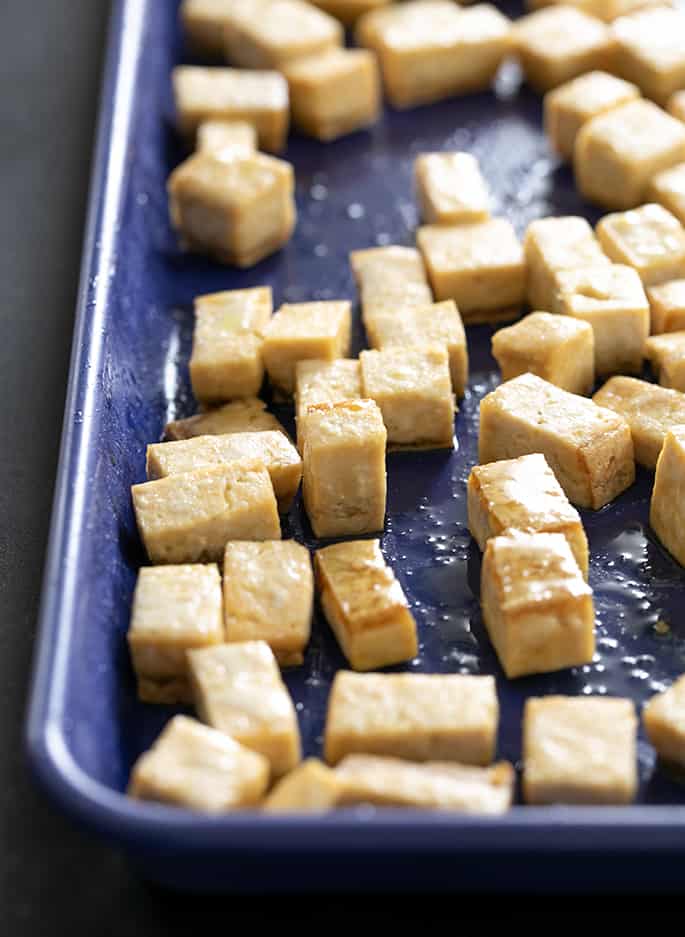
How to roast tofu
I make baked tofu all the time for dinner, and serve it in all sorts of ways that everyone in my family loves. Of course, you can eat any tofu raw right out of the package, and I love it like that, but I think most people prefer it cooked.
I always begin with extra firm tofu, and my favorite brand is Trader Joe's. Their extra firm tofu is packed in water, as all tofu is, but it's super dense so it's very easy to squeeze most of the water out of it with nothing more than a paper towel.
If your extra firm tofu is more porous, you might want to press out the moisture. You can use either a tofu press or place it in a few layers of towels (paper or cotton tea towels) on a plate and pressed with something heavy like a book or canned goods. Either method is really time-consuming and annoying, but effective.
After removing the moisture, simply slice the tofu into chunks, toss them with a tablespoon or two of extra virgin olive oil, add kosher salt to taste, toss again, and spread into an even layer on a nonstick or lined baking sheet. Bake in a 400°F oven for about 20 minutes.
Be careful not to bake the tofu for so long that it becomes crunchy through to the middle. You only want a crust on the outside of the tofu. If you're very, very patient, you can flip the pieces of tofu halfway through baking, so it crisps evenly on both sides. I am not very, very patient.
I serve this tofu in these gluten free ramen noodles cups, but also in cauliflower fried rice. I also love to serve tofu in gluten free Chinese food and as a protein addition to green salads.

Gluten free ramen ingredients and substitution suggestions
Nutritional yeast
I typically use Bragg brand “Nutritional Yeast Seasoning,” and I find it online, in my local health food store and in Whole Foods. Bob's Red Mill also makes a gluten free “Nutritional Food Yeast,” that is just as good.
Nutritional yeast is an inactive form of yeast, and has a mild nutty and cheesy flavor. I'm not planning to sprinkle it on all my food (some love it on popcorn!), but I do love it in this bouillon powder.
Wasabi Powder
I use Eden brand wasabi powder, as it's reliably gluten free. I find it online and in my local health food store.
Ramen or Rice Noodles
King Soba brand and Lotus Foods brands brown rice ramen are gluten free ramen noodle brands that are sold in nests. I find them in most grocery stores today.
I have also used Happy Pho brand brown rice noodles, also purchased on amazon.com, which also come in separate “nests,” which is perfect for portioning in these instant noodle cups. Annie Chun also makes gluten free Maifun rice noodles.
Miso Paste
Some types of miso paste are made from barley, which is of course off limits on a gluten free diet. Others are made from soybeans. There are a few reliably gluten free brands of miso paste.
I have used both Eden brand gen mai miso (which I really like, but it can be a bit hard to find) and Organicville gluten free miso pastes, which I found at Whole Foods. In the video, you'll see me using a squeeze package of miso paste made by Smart Miso, which I really like for ease of use.
If you can't find miso paste, try adding some gluten free fish sauce for the pronounced “umami” flavor that miso delivers so well.
Tamari/soy sauce
I usually use Kikkoman brand gluten free soy sauce or San-J brand Tamari gluten free soy sauce. Bragg brand Liquid Aminos is also a great choice, but lacks some of the depth of flavor of the others.
Scallions
When I buy fresh scallions, I wash and chop them (or cut them into a large dice with kitchen shears), and spread them in a single layer on a lined rimmed baking sheet. Then, I place the baking sheet in the freezer. Once the scallions are frozen, I transfer them to a zip-top bag and store them in the freezer.
Frozen chopped scallions defrost very quickly when removed from the freezer, and I can use as many or as few as I like. And once they're frozen, they don't smell at all, so no worries about a smelly freezer.
I also buy freeze-dried scallions that are stored at room temperature, and use them sparingly since they're expensive.

How To Store and Serve Gluten Free Ramen
You've got a few options here. My favorite is to pop all the ingredients, apart from water, in the jars, in the fridge, where they'll keep for 3 days. Then you just get a jar out of the fridge, let it come up to room temperature, then add hot water and stir.
But you can also store the whole thing, including the completed broth, in the fridge, then just heat up an individual serving on the stovetop. The noodles should hold their shape for up to 3 days, but the texture may be less favorable toward the end of the week. And, you can take your hot gluten free ramen soup in a thermos, so it's ready whenever you are.
Top tips for making perfect ramen
This recipe is endlessly versatile, so it's very difficult to go wrong. But here are my top tips for perfect gluten free ramen:
- Use high-quality ingredients for maximum flavor.
- Cook your vegetables until tender but still crisp. Remember that you're going to be adding boiling water to everything to create the soup
- Don't overcook your noodles; they cook quickly.
- Adjust seasoning according to taste preferences.
- If you're not serving the noodles right away, toss them in a little olive oil so they don't clump.
- Add toppings like boiled eggs, meat, and nori sheets just before serving so they don't fall apart.
FAQs
Ramen is a Japanese noodle soup dish. There are endless variations of ramen soup, but they all involve a broth, noodles, and toppings ranging from veggies and tofu to chicken, beef, or seafood.
Traditional ramen noodles are not gluten-free since they are made from wheat flour. However, you can buy some really good quality gluten free ramen noodles now. You could make your own, too, but that's a lot more work for something that's supposed to be quick and easy, so I suggest sticking to a good quality brand of gluten free noodles.
Yes! You can add protein to your gluten-free ramen noodle soup by topping with cooked chicken breast strips, shrimp, or tofu cubes.
When serving gluten free ramen noodles, add your favorite toppings like boiled eggs, seafood, nori sheets, green onions, bean sprouts, and sesame seeds.
Gluten Free Ramen Noodles Recipe
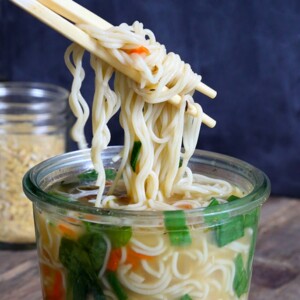
Ingredients
For the vegetable bouillon powder
- ½ cup (40 g) nutritional yeast flakes
- 2 tablespoons kosher salt
- 2 tablespoons onion flakes, (or 1 tablespoon onion powder)
- 1 ½ teaspoons garlic powder
- ¾ teaspoon dried thyme
- ½ teaspoon dried sage
- 1 teaspoon smoked paprika
- ¼ teaspoon turmeric
- ¼ teaspoon wasabi powder, (if you can’t find it, leave it out)
- ⅛ teaspoon ground ginger
- 1 tablespoon light brown sugar, coconut palm sugar works, too
For the instant soup
- 4 “nests” gluten free ramen or rice noodles
- Raw shredded carrots
- Sugar snap peas, blanched in boiling water for 30 seconds
- Sliced button or miniature portobello mushroom, blanched in boiling water for 30 seconds
- Fresh baby spinach leaves
- 1 cup extra-firm tofu, cubed, (raw or baked as described above), or cooked and diced chicken breasts
- 2 tablespoons gluten free mellow white miso paste, I like Miso Master brand
- 4 teaspoons gluten free tamari
- ¼ cup Vegetable Bouillon Powder , (recipe above)
- ½ cup fresh scallions, chopped (or 2 tablespoons freeze-dried scallion greens)
Instructions
Make the vegetable bouillon powder.
- Place all the bouillon ingredients in a medium-size bowl and mix to combine well. Place in a resealable glass container (a small mason jar works great), and set aside.
Prepare the noodles.
- Cook the noodles one nest at a time according to the package directions or by boiling them in about a quart of water until they separate and begin to soften.
- Drain in a colander and rinse with cold water to stop the cooking, and set them aside briefly.
- If you don’t plan to assemble the noodle cups right away, toss the softened noodles in a tiny bit of extra virgin olive oil to prevent clumping.
Assemble the instant soup cups.
- Set out four heat-safe jars that can accommodate about 20 fluid ounces in volume (I use 19.6-ounce straight-sided Weck jars).
- In each jar, layer the ingredients in the following order: about 1 cup total vegetables (spinach leaves, carrots, blanched mushrooms, blanched sugar snap peas), 1/2 cup tofu or chicken, 1 1/2 teaspoons miso paste, 1 teaspoon tamari, one nest of softened noodles, 1 tablespoon bouillon powder and, finally, scallion greens to taste.
- Cover and store in the refrigerator until ready to serve.
- You can store assembled cups for up to 3 days if your ingredients are fresh.
Serve the soup cups.
- When ready to serve, if the assembled cup has been refrigerated, allow it come to close to room temperature first.
- Then, fill each container with boiling water (leaving a small space to permit covering the container) and cover tightly.
- Allow the container to steep for 2 minutes. Open, stir gently and enjoy.
Video
Notes
Nutrition
Nutrition information is automatically calculated, so should only be used as an approximation.



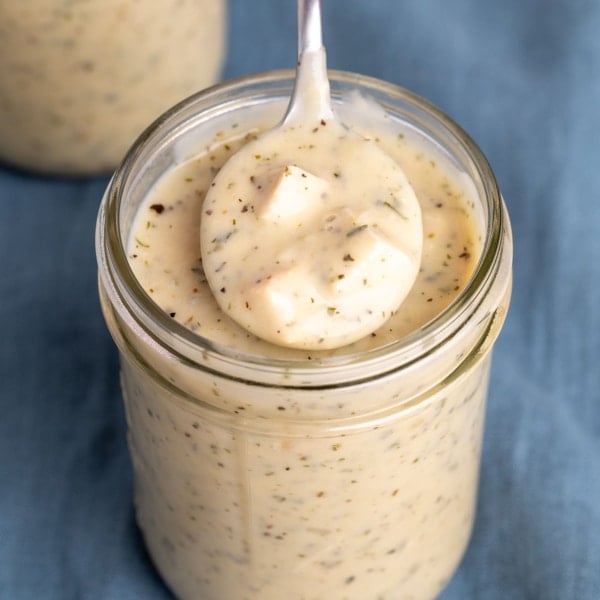

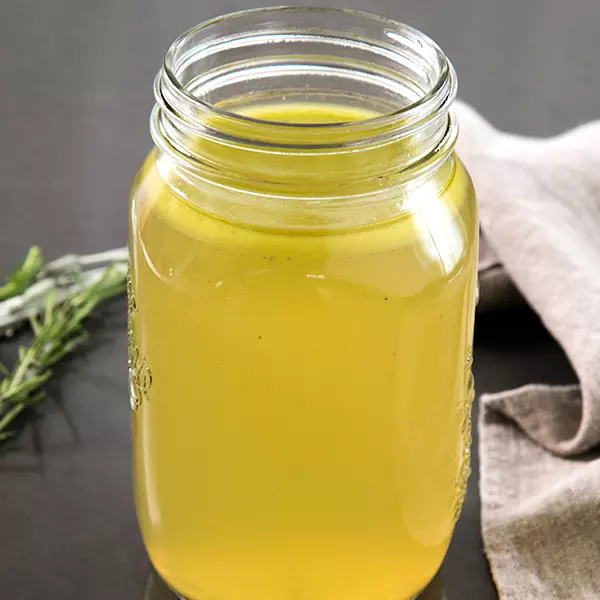









Hello Nicole, I will be trying this recipe soon and I will come back and rate it. But for now I wanted to say how much I like the look of the re-tooled site. As it is both your business (and a years long passion project), I am sure a lot of thought goes into any changes you make.
Thank you so much for noticing and for saying that, Gretchen! Since the site has been around since 2009, it had been put together with different patches over the years, as that’s all that seemed possible. This is a total from-scratch redo and I’m so much more relaxed about it, not always worried something will break. It means so much to me that you’re enjoying it. The means more to me than I can really explain!
A tempting recipe! I’ve used my own version of this with gluten-free noodles, but don’t have a favorite yet for the best ingredients to go with them.
Two questions:
1- Why include the sugar at all?
2- Best way to add the miso: The Japanese are very particular about using miso. Both not including it in a recipe where it is cooked (hence adding boiling water for x minutes might be too much for it?) The flavor might stay, but it would lose its most important qualities. They also object to the opposite where it isn’t “cooked” at all – i.e., stirring it in at the end without gently reheating some. Would love to know more about this!
This is my version of ramen, PJ. I’m not Japanese and I’m not attempting to appropriate anything from another culture. Just giving my version! I slightly undercook the noodles and add boiling water so you have hot soup! The sugar is because most packaged kinds have a touch of it for balance. Please do it your favorite way!
do you have a receipe for gluteen free noodles that i can use for making ramen noodles
I discuss various store-bought gluten free ramen brands in the next of the post, and I have a recipe for homemade gluten free pasta and one for homemade gluten free egg noodles on the blog. Please use the search function to find them easily.
I’m also curious about which brand of noodles is in the picture? I see the suggested brands in the post, but still wonder which this is. I’ve tried the Lotus brand but wasn’t too crazy about it.
I believe they were the Happy Pho noodles in the photos, Nicola.
Hi, Nicole ??. Just saw this recipe in the email you sent out today. This sounds wonderful! I was thinking you could, also, add small salad shrimps, instead of the chicken or tofu. Actually, leaving out the protein altogether would work, too. ? Something to look forward to.
Absolutely those variations would be great. Anything goes, Linda!
Do you have any update on the ramen noodles? My daughter just tnds to not like brown rice noodles. And the ones in your pictures look so white. What did you use in the picture? Can you tell me which brands to look for that come in a nest? Thanks!
Please see the Ingredients and substitutions section where I explain all the ingredient sourcing information, Jennifer.
I’ve been craving cup o noodle but was advised not to eat instant noodles anymore because of my stomach issues. Am I glad I found this recipe that incorporates all fresh ingredients. Who knew there were so many spices and seasonings in those cup o noodles?? I didn’t have yeast flakes but I had chicken bullion cubes I used in place of it and I used Asian veggies and fresh noodles from the Asian market for even fresher taste. Hits the spot!! Thank you for sharing this recipe, I no longer have to eat the unhealthy instant noodle anymore!
I skip the wasabi, but in soup bowl I add a blob of kimchi. Om nom nom :)